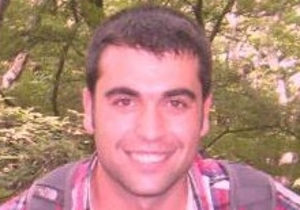 On Monday June 24 at 14:00 we have the pleasure to welcome Jacob Torrejon from SPEC, CEA Saclay, France. He will give us a seminar at CEA/IRIG, Bat 1005, room 445 entitled :
On Monday June 24 at 14:00 we have the pleasure to welcome Jacob Torrejon from SPEC, CEA Saclay, France. He will give us a seminar at CEA/IRIG, Bat 1005, room 445 entitled :
Chiral magnetism controlled by spin-orbit torques and spin-torque nano-oscillators: From magnetic memories to neuromorphic computing
Electrical manipulation of the magnetization (uniform or magnetic textures) by spin- polarized current is essential for developing advanced storage class memory devices [1]. In ultrathin magnetic heterostructures with large spin-orbit coupling and broken inversion symmetry (ultrathin magnetic layer attached to heavy metal underlayer), new mechanisms has emerged based on spin-orbit coupling phenomena which exhibits much higher efficiency than conventional spin transfer torque mechanism in magnetic tunnel junction [2]. Key to the power efficient magnetization control is the large spin-orbit coupling of the heterostructure. First, the spin Hall effect (SHE) induced by the heavy metal layer which generates large spin current exerting a torque on the adjacent magnetic layer [3]. And second, the Dzyaloshinskii- Moriya interaction (DMI) which promotes Neel walls with fixed chirality and allows very efficient and fast domain wall motion [4]. In the first part of my seminar, I will describe in detail the two spin-orbit coupling mechanisms, SHE and DMI, discussing several experimental techniques used for the quantitative estimation of both phenomena [5]. Although magnetic memories are the most straightforward application of spin transfer and spin-orbit torques, magnetic tunnel junction can operate as tuneable non-linear nano- oscillators under different bias conditions (current and magnetic field). These devices called spin torque nano-oscillators have been proposed as new RF sources [6] and very recently for neuromorphic computing [7] inspired in the complex non-linear dynamical behaviour displayed in our brain [8]. Indeed these observations have inspired a whole class of models based on non-linear oscillators networks able to perform cognitive tasks [9]. However this type of computing requires a huge number of oscillators for achieving excellent performance and nanoscale oscillators with low noise are necessary for easy integration in a microchip. Spin torque nano-oscillators are very promising building block for neuromorphic computing because their well-controlled magnetization dynamics leading to high signal to noise ratios, their exceptional ability to interact, non-linear tunability by spin torques, fast time response (ns range), long lifetime and lower power consumption [7]. In the second part of my seminar, I will show how to leverage the non-linear dynamics of spin-torque nano-oscillators for neuromorphic computing, and present our first experimental achievements of speech recognition task [10] and temporal pattern recognition with delayed feedback memory [11]. Finally, I will give the main ingredients towards massively parallel architectures.
[1] Katine et al, PRL 2000, S.S.P. Parkin et al. Science 2008, M. Yamanouchi et al., Nature 2004.
[2] I. M. Miron et al., Nat Mater 2010; I. M. Miron et al., Nature 2011.
[3] L. Liu et al., Science 2012; J. Kim et al. Nat Mater 2013.
[4] A. Thiaville et al., Europhys. Lett. 2012; S. Emori et al, Nat Mater 2013; K.-S. Ryu et al., Nat. Nano. 2013.
[5] J. Torrejon et al Nat. Com 2014 ; J. Torrejon et al., PRB 2015 ; J. Torrejon et al., Nat Com 2016.
[6] Kisselev et al Nature 2003; Rippard et al, PRL 2004.
[7] J. Grollier et al., Proc. IEEE 2016.
[8] D. R. Chialvo, Nat. Phys. 2010. J. Fell and N. Axmacher, Nat. Rev. Neurosci. 2011.
[9] E. M. Izhikevich, IEEE Trans. Neural Networks 2004.
[10] J. Torrejon et al., Nature 2017.
[11] M. Riou et al., Submitted 2019




